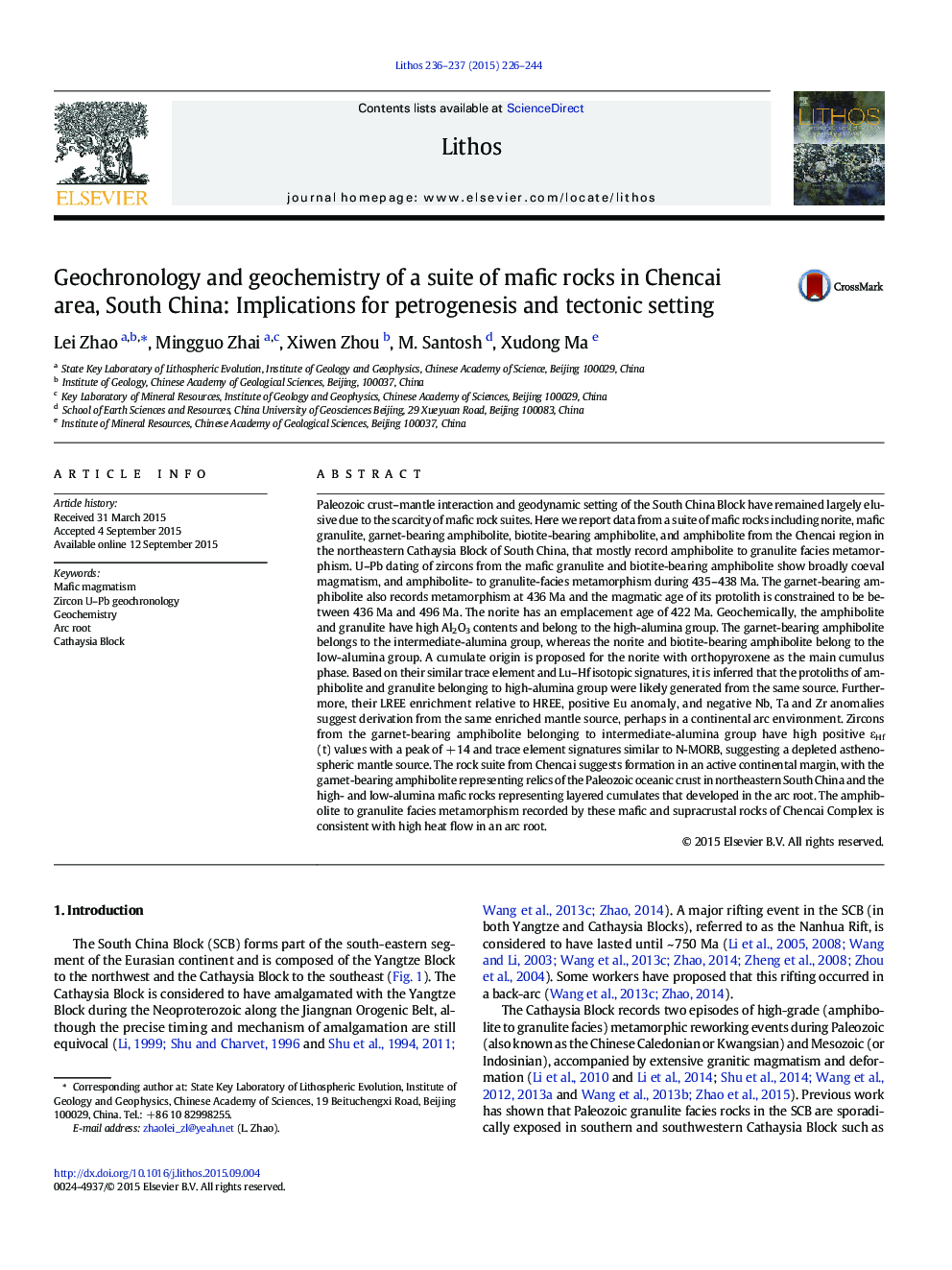| Article ID | Journal | Published Year | Pages | File Type |
|---|---|---|---|---|
| 4715607 | Lithos | 2015 | 19 Pages |
•Metamorphism closely associated with mafic magmatism.•Prolonged mafic magmatism and metamorphism during 449–422 Ma•The ultramafic and mafic complex are cumulate products.•The garnet amphibolite represents the relic of Paleozoic oceanic crust.•These mafic rocks and granulites attest to arc development and maturation.
Paleozoic crust–mantle interaction and geodynamic setting of the South China Block have remained largely elusive due to the scarcity of mafic rock suites. Here we report data from a suite of mafic rocks including norite, mafic granulite, garnet-bearing amphibolite, biotite-bearing amphibolite, and amphibolite from the Chencai region in the northeastern Cathaysia Block of South China, that mostly record amphibolite to granulite facies metamorphism. U–Pb dating of zircons from the mafic granulite and biotite-bearing amphibolite show broadly coeval magmatism, and amphibolite- to granulite-facies metamorphism during 435–438 Ma. The garnet-bearing amphibolite also records metamorphism at 436 Ma and the magmatic age of its protolith is constrained to be between 436 Ma and 496 Ma. The norite has an emplacement age of 422 Ma. Geochemically, the amphibolite and granulite have high Al2O3 contents and belong to the high-alumina group. The garnet-bearing amphibolite belongs to the intermediate-alumina group, whereas the norite and biotite-bearing amphibolite belong to the low-alumina group. A cumulate origin is proposed for the norite with orthopyroxene as the main cumulus phase. Based on their similar trace element and Lu–Hf isotopic signatures, it is inferred that the protoliths of amphibolite and granulite belonging to high-alumina group were likely generated from the same source. Furthermore, their LREE enrichment relative to HREE, positive Eu anomaly, and negative Nb, Ta and Zr anomalies suggest derivation from the same enriched mantle source, perhaps in a continental arc environment. Zircons from the garnet-bearing amphibolite belonging to intermediate-alumina group have high positive ɛHf (t) values with a peak of + 14 and trace element signatures similar to N-MORB, suggesting a depleted asthenospheric mantle source. The rock suite from Chencai suggests formation in an active continental margin, with the garnet-bearing amphibolite representing relics of the Paleozoic oceanic crust in northeastern South China and the high- and low-alumina mafic rocks representing layered cumulates that developed in the arc root. The amphibolite to granulite facies metamorphism recorded by these mafic and supracrustal rocks of Chencai Complex is consistent with high heat flow in an arc root.
